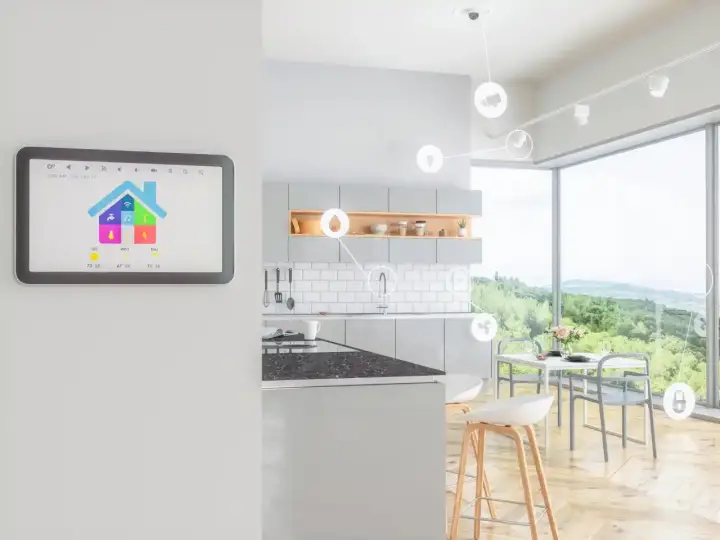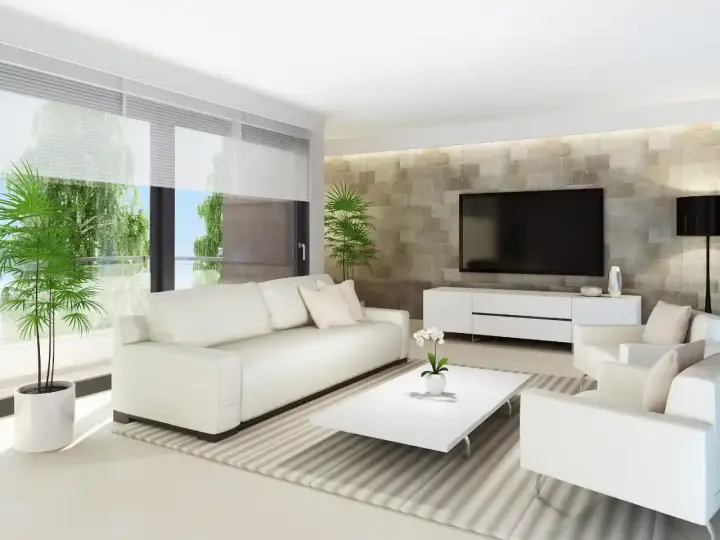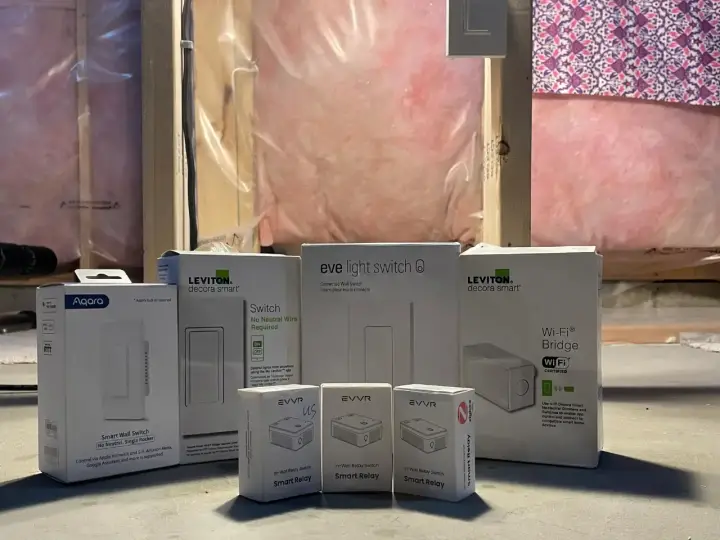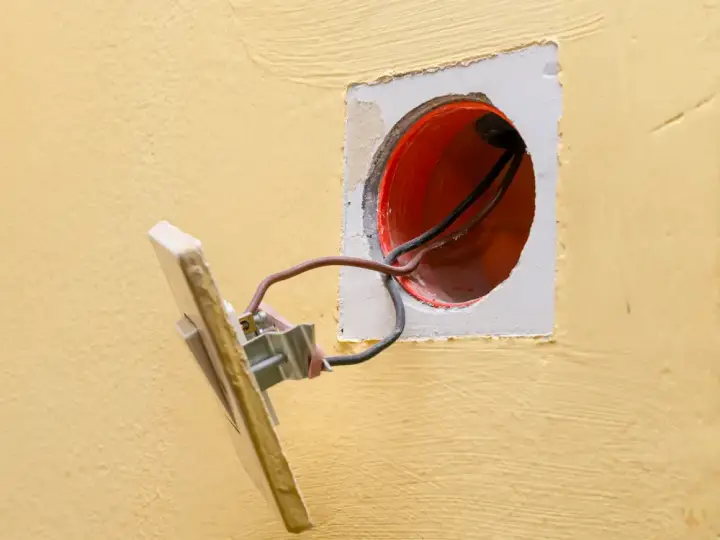11 Awesome Smart Home Features That You Want in Your Home
Updated on 17th Jan 2021 18:28 in General, Smart
Manufacturers are shipping more and more products with smart features due to the ubiquity of systems such as Alexa or Google Home. While they are certainly becoming more common, many still haven't heard about why you would even want to build a smart home in the first place. I can assure you there is no shortage of awesome technologies to be used in your home. Here is a list of the 11 most awesome smart home features.

Table of Contents
The Internet of Things (IoT)
The word "smart home" often leads to a certain mental image that can often hide many of its other benefits. You may have heard of the Internet of Things (IoT), a huge network of devices spanning from kitchen appliances to gym equipment. This connectivity is another great feature that a smart home will bring. An interconnected home includes quite a few benefits that may not seem obvious at first. Imagine the possibilities when every appliance communicates with one another. The washer could alert the dryer that it's done and could even transfer the laundry if the dryer is ready!
In most cases, this network will be built with your existing home network often referred to as "the WiFi". While all (consumer) WiFis will be part of a network, not all networks have WiFi. The most important distinction is that WiFi is a wireless standard for communicating between devices and will first connect to your local network before being routed to the internet. Devices can communicate over this local network which is exactly what HomeKit does. Despite the name, the "Internet of Things" could just be a network of interconnected devices local to your home!
Voice Assistants
While not for everyone, voice assistants are often directly associated with smart homes and are definitely high useful. With a single verbal command, you can modify the state of your home, such as changing the temperature or turning all of the lights off at night. There are generally three types of voice assistants you will find, those that are cloud-based, those that are cloud-local, and those that are completely local.
- Cloud-based: listens for a wake word and records audio for a short period. The recording is uploaded to a cloud service where the command is interpreted, and the result is sent back to the assistant. The assistant will verbally reply while the cloud performs the required actions.
- Cloud-local: listens for a wake word and records audio for a short period. The recording is uploaded to a cloud service, and the result is sent back to the assistant. The assistant will then verbally reply while directly performing the actions on your local network.
- Local: listens for a wake word and records audio for a short period. The recording is processed locally in your home where the command is interpreted. The assistant will then verbally reply while directly performing the actions on your local network.
While the differences may seem subtle, there are different implications for privacy and performance with each type. Siri is an example of the cloud-local type as it will use the cloud only to interpret the recording. Local assistants often suffer from insufficient processing power leading them to take longer to form a reply. They can also be more expensive as a result of the requirement for a decent processor. The trade-off is that these devices never send your audio clips to a third party. If a completely local voice assistant sounds cool, check out my article on using Mycroft offline here!
Automations
An automation is an action that will occur automatically when certain criteria are met. The exact details vary greatly depending on the ecosystem, but generally, they will allow you to create a flow of condition and events. This flow could specify to lock the door and turn off the lights at a certain time. Automations can be as complicated or as simple as required with some performing a single action when a condition is met and with others having a massive state tree. They can also be used as advanced scenes that perform complicated actions such as slowly dimming a light or flashing a light.
Almost every ecosystem will have some form of automation system though some have rather inadequate options or triggers which can feel disappointing. Despite these limitations, systems like Node-RED or If This Then That (IFTTT) can add missing functionality externally. Adding multiple automations together allows creating complex rules that can make your daily life that much easier by automating away repetitive, boring tasks. If you would like to see an example of a more complicated automation, you should check out my article on creating a smart kettle here.
Wake up
Every day, most of us wake up to the sound of a blaring alarm clock telling us the time of day has come. This sudden, loud noise is unlikely to be the most optimal way to wake up and luckily, a smart home can help resolve that. A technique called gentle wakeup involves slowly turning on the lights in your bedroom over the course of quite a long time to simulate the sunrise. I have been using this method for many months and have found it vastly superior to waking up via a loud alarm clock. In addition to the gentle wake, my automation automatically synchronizes my morning alarm from my phone to the smart hub. That means I can change the time I'm going to wake up at just by changing the built-in alarm on my phone! Sounds cool? Check out my article on building this system here!

Remote control
Remote control is quite possibly the most interesting feature thanks to the potential it unlocks. Left the house and don't remember if you locked the door? Remote control can help by allowing you to check the status of your front door from anywhere. In the case that you did leave the door unlocked, there's no problem as a simple press of a button will lock it. Remote control can be used to lower the thermostat's temperature before you get home to prevent wasting energy while you are away while still being just right for when you arrive. You could start watering the grass while away or even remotely check that all of the lights are off while on vacation.
Remote monitoring
It would be pretty awesome to be able to monitor what's going on in your home from anywhere, and that's exactly what smart homes let you do. You can remotely view the progress of the dishwasher, robot vacuum, washing machine, and anything else you'd want to see while away. If you have security cameras, you'd also be able to view a live video feed from anywhere in the world (with an internet connection that is). Some systems will even overlay any sensors along with their current state on top of the video, allowing you to gather all the information you'd need at a glance.
Your kids get home before you do? You can have peace of mind knowing that you can keep an eye on them from afar. This can be used to identify when a precious package has been delivered so that you can come home to bring it inside. Some cameras will actually detect the presence of certain objects such as a package and notify you without requiring you to look! The possibilities are truly endless, which is why remote control and monitoring are two of the most powerful features in a smart home. Monitoring also includes viewing the state of devices you are controlling remotely, or it would be a bit difficult to do anything!
Smart entertainment
With highly connected devices, it becomes possible to create an elevated entertainment experience. An example of this could be creating an automation that turns off the lights when a movie starts and turns them on again when the movie is over. Some devices like the Apple HomePod can even be used as an extra speaker while watching content on Apple TV. If you want to go all-in, you could even use a popcorn maker with a smart plug to start making popcorn before your movie. A set of scenes for before, during, and after a movie can be used to easily turn on and off a large number of lights and loud machines. In any case, entertainment in a smart home is sure to be exciting with limitless possibilities.

Multi-room audio
Systems like Sonos allow a network of speakers to be used as a whole-house audio system that supports individually addressable rooms. That means that you can listen to music while the kids watch a movie or that everyone in the house can listen to a different song at the same time in their own room. The real advantage of these systems is that you aren't stuck listening in a single room as the music can effectively follow you anywhere speakers are installed. Such a design isn't for everyone and can sometimes cost quite a lot, but that's not to say they need to be expensive. Some DIY solutions, such as taking advantage of Airplay to stream audio to any speaker, can deliver acceptable results for much less than a commercial system.
Security
Security is always a factor regardless of where you live, so most smart homes can integrate with security systems out of the box. It's important to be careful with security as the consequences of a badly designed solution could be devastating. That's why I always recommend using commercially available systems like the Honeywell Lyric as they will continue to function on their own even if something goes wrong with the smart home. Despite the potential pitfalls, an integrated security system can be awesome with features like sensor overlay in video playback and remote arming/disarming. Take a look at my article on HomeKit compatible security systems to see what smart security can look like!
Smart pet care
Pet owners everywhere rejoice! Smart technology can help make caring for your pet a breeze with automatic food dispensers and water bowls. Leaving home for a few days often means deciding what you should do with your furry friend. Having someone look after them can be cumbersome and expensive, so you'd much rather leave them at home. Sadly, most pets can get a bit misbehaved when left alone so you can't just leave a load of food out. Automatic pet feeders can dispense the right amount of food on a set schedule to prevent them from eating it all at once. They will usually have a secure hopper that pets can't open to ensure they are fed the right amount.
Quite a few of these devices will also include communication equipment designed to you see and hear your beloved pet while you are away. They will have a camera on the front along with a microphone for capturing any sound. In some cases, they will even include a speaker for you to talk to your pet. These machines come in many forms and include everything from food dispensers to fancy water bowls. The water dispensers hide a larger water supply such that there won't be any large spills while they are left unattended. You could even set up an automation to notify you whenever the video camera detects movement to notify you when your pet is there!

Home maintenance
Smart homes are effectively big control systems that can really be used to control anything you want. Something everyone does but doesn't necessarily enjoy is maintenance which ranges from cleaning to tidying. Manufacturers have sought to help this problem with products such as the robotic vacuum cleaner used to reduce housekeeping tasks. When they are integrated with a smart home, they can easily coordinate with multiple other robots to deliver optimal performance. An example could be a vacuum robot that notifies the system when the floors are clean, which will trigger the dispatch of a robotic mop. Action sequences like these are the biggest reason a smart home can help with home maintenance.



